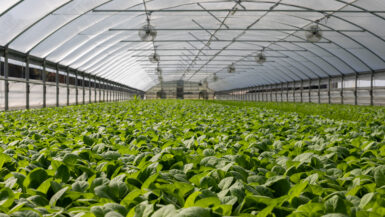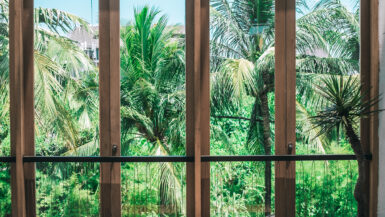What is the role of indoor vertical gardens in modern architecture? In today’s rapidly urbanizing world, integrating nature into modern architecture has become essential to sustainable design. One innovative approach gaining momentum is Indoor Vertical Gardening, which not only offers a
This article delves into the role of Indoor Vertical Gardens in contemporary architectural practices, examining their advantages, challenges, and the various techniques employed to create these verdant spaces. Join us as we explore the fascinating intersection of horticulture and architecture and discover how these vertical green installations revolutionize how we perceive and interact with our built environment.
Benefits of Indoor Vertical Gardens for Urban Living
As urban environments continue to expand, the need to incorporate elements of nature within our living and working spaces has become increasingly crucial. Indoor Vertical Gardens offer a multifaceted solution to this challenge, providing numerous advantages that enhance modern architecture’s aesthetic and functional aspects.
This section outlines the key benefits of incorporating Indoor Vertical Gardens into urban living spaces and discusses the essential factors contributing to their success.
Enhancing Air Quality and Reducing Pollution
One of the most significant benefits of Indoor Vertical Gardens is their ability to improve air quality within the built environment. Plants act as natural air filters, absorbing harmful pollutants and carbon dioxide while releasing oxygen. This process leads to a healthier and more comfortable living space, particularly in densely populated urban areas where air pollution is a significant concern.
Thermal Insulation and Energy Efficiency
Indoor Vertical Gardens also contribute to energy efficiency by providing thermal insulation. The layer of plants and growing medium creates a barrier that reduces heat transfer, helping to maintain a stable indoor temperature. This reduces the need for artificial heating or cooling systems, resulting in lower energy consumption and a reduced carbon footprint.
Acoustic Insulation and Noise Reduction
Urban environments are often plagued by noise pollution, and Indoor Vertical Gardens can serve as an effective solution. The plants and their substrate absorb sound waves, providing a natural form of acoustic insulation. This creates a more peaceful and comfortable indoor atmosphere, which is especially beneficial in areas with high traffic or construction noise levels.
Promoting Mental and Emotional Well-being
Greenery in our living spaces has been linked to various psychological benefits, including reduced stress, improved concentration, and increased feelings of relaxation. Indoor Vertical Gardens provide a visual connection to nature, creating a calming and therapeutic environment that promotes mental and emotional well-being.
Space Optimization and Architectural Aesthetics
In space-constrained urban settings, Indoor Vertical Gardens offer an innovative way to maximize available space. By growing plants vertically, these gardens require minimal floor space, allowing for more efficient land use. Additionally, they add a unique and visually appealing element to architectural design, enhancing the aesthetic value of both interior and exterior spaces.
The Importance of Proper Drainage in Indoor Vertical Gardens
For Indoor Vertical Gardens to thrive and deliver their full potential, various practical considerations, such as proper drainage, must be addressed. Effective drainage systems prevent waterlogging and root rot, ensuring plants remain healthy and vibrant. To learn more about this crucial aspect of Indoor Vertical Garden design, visit our article on the above topic.
Indoor Vertical Gardens offer a wealth of advantages for urban living, enhancing the quality of life within our built environments. By considering factors such as air quality, thermal insulation, noise reduction, well-being, space optimization, and proper drainage, architects and designers can create functional and visually striking green spaces that enrich the urban experience.
Environmental Advantages of Vertical Gardens in Architecture
Indoor Vertical Gardens are a visually stunning addition to modern architecture and contribute significantly to environmental sustainability. This section explores the ecological advantages of incorporating Indoor Vertical Gardens into contemporary architectural designs and their positive impact on the built environment and the natural world.
By understanding the ecological benefits of these installations, architects and designers can create aesthetically pleasing and environmentally responsible spaces.
Reducing the Urban Heat Island Effect
One of the primary environmental advantages of Indoor Vertical Gardens is their ability to mitigate the Urban Heat Island (UHI) effect, which refers to the increased temperature in urban areas compared to their rural surroundings.
This phenomenon is caused by the prevalence of heat-absorbing surfaces, such as concrete and asphalt, along with the reduction of city green spaces. Indoor Vertical Gardens help to counteract this effect by providing evaporative cooling, as the plants release moisture into the air, reducing the surrounding temperature.
Improving Biodiversity and Habitat Provision
Indoor Vertical Gardens can support urban biodiversity by providing habitats for various species. These green installations can serve as a refuge for insects, birds, and other small animals, helping to maintain ecological balance within urban settings. Moreover, using native plant species in Indoor Vertical Gardens can further enhance local biodiversity and promote the conservation of indigenous flora.
Stormwater Management and Pollution Control
Effective stormwater management is essential for preventing flooding and water pollution in urban areas. Indoor Vertical Gardens contribute to this process by absorbing and filtering rainwater, reducing runoff and the subsequent strain on stormwater infrastructure. Moreover, the plants in these gardens are effective at capturing airborne pollutants, improving air quality, and contributing to a healthier urban environment.
Resource Conservation and Waste Reduction
Indoor Vertical Gardens can also contribute to resource conservation and waste reduction by using recycled materials in construction and maintenance. For instance, reclaimed wood, recycled plastic, and repurposed metal can be used to create the structural components of these gardens.
Additionally, composting organic waste from households or local businesses can provide a sustainable source of nutrients for the plants, minimizing the need for synthetic fertilizers.
Creating Your Own Indoor Vertical Garden Wall
With the numerous environmental benefits of Indoor Vertical Gardens, it’s no surprise that many individuals are inspired to create their installations. To learn how to build a DIY Indoor Vertical Garden Wall, visit our comprehensive guide, linked above. We can contribute to a greener, more sustainable urban landscape by incorporating these environmentally friendly installations into modern architectural designs.
Integrating Indoor Vertical Gardens into contemporary architecture offers a range of environmental advantages that positively impact both the built and natural environments. These vertical green installations promote sustainable urban living and a healthier planet by reducing the Urban Heat Island effect, supporting biodiversity, managing stormwater, conserving resources, and controlling pollution.
Integrating Indoor Vertical Gardens in Building Design
As the popularity of Indoor Vertical Gardens continues to grow, architects and designers are exploring innovative ways to integrate these installations seamlessly into modern building design. This subsection delves into the various methods and strategies employed to incorporate Indoor Vertical Gardens into modern arch projects, enhancing the aesthetic and functional aspects of urban spaces. By understanding and implementing these techniques, architects can create visually stunning and environmentally responsible structures that redefine the role of nature in our built environment.
Choosing the Right Location and Orientation
A crucial aspect of integrating Indoor Vertical Gardens in building design is selecting the appropriate location and orientation. Factors such as available sunlight, temperature, and humidity levels must be carefully considered to ensure the optimal growth and health of the plants. Creative solutions, such as incorporating skylights or using reflective surfaces to maximize natural light, can enhance the effectiveness of these installations and their overall visual impact.
Combining Form and Function with Structural Integration
Indoor Vertical Gardens can seamlessly integrate into a building’s structural design, providing both functional and aesthetic benefits. For instance, using green walls as partition elements can create natural divisions between spaces while contributing to improved air quality and acoustic insulation. By considering these dual roles, architects can devise innovative solutions that enhance the overall design and functionality of the building.
Developing Customized Plant Selection for Each Project
A thoughtful and tailored plant selection is essential to achieving a visually striking and sustainable Indoor Vertical Garden. Architects and designers should collaborate with horticulturists and landscape professionals to select plant species suited to the building’s specific environmental conditions and desired aesthetic. Additionally, incorporating native plants can support local biodiversity and contribute to the project’s overall eco-friendliness.
Employing Advanced Irrigation and Maintenance Systems
The success of an Indoor Vertical Garden is highly dependent on the efficiency of its irrigation and maintenance systems. Architects and designers must consider integrating advanced technologies, such as automated irrigation, nutrient delivery, and monitoring systems, to ensure the long-term health and sustainability of the garden. These systems minimize resource consumption and waste and reduce the labor and time required for upkeep.
Creating Multisensory Experiences Through Design Elements
Integrating Indoor Vertical Gardens in modern architecture offers an opportunity to create unique multisensory experiences for building occupants. By incorporating water features, seating areas, and ambient lighting, architects can transform these gardens into interactive and immersive spaces that promote relaxation, contemplation, and connection with nature. This approach elevates the role of Indoor Vertical Gardens beyond mere aesthetics, fostering a deeper appreciation for the natural world within our built environment.
Incorporating Indoor Vertical Gardens into building design requires careful consideration of location, orientation, structural integration, plant selection, and maintenance systems. By addressing these aspects and creating multisensory experiences, architects can successfully integrate these vertical green installations into modern architecture, enriching the urban landscape and promoting sustainable and harmonious coexistence with nature.
Creating Sustainable Spaces with Indoor Vertical Gardens
Indoor Vertical Gardens have emerged as a vital component of sustainable architecture, offering a unique blend of aesthetics and functionality. By integrating these living installations into modern buildings, architects and designers can create environmentally responsible spaces that foster a deeper connection with nature.
This subsection explores how Indoor Vertical Gardens contribute to creating sustainable spaces, highlighting their role in promoting energy efficiency, resource conservation, and ecological awareness.
Maximizing Energy Efficiency and Climate Control
A key aspect of sustainable architecture is energy efficiency, and Indoor Vertical Gardens can significantly reduce a building’s energy consumption. Their natural insulation properties help regulate indoor temperature, minimizing the reliance on artificial heating and cooling systems. The plants’ evaporative cooling effect also contributes to a more comfortable indoor climate, reducing the need for energy-intensive HVAC systems.
Conserving Resources through Innovative Design Solutions
Resource conservation is another crucial element of sustainable architecture, and Indoor Vertical Gardens can contribute to this objective through innovative design solutions. By using recycled materials to construct vertical gardens and implementing efficient irrigation systems, architects can minimize the use of new resources and reduce waste. Furthermore, repurposing organic waste as compost for the plants contributes to a circular economy, promoting a more sustainable approach to urban living.
Encouraging Biodiversity and Ecosystem Services
Indoor Vertical Gardens can significantly enhance urban biodiversity by providing habitats for various plant and animal species. By incorporating native plants into these installations, architects and designers can support local ecosystems and promote the conservation of indigenous flora and fauna. This approach contributes to the overall ecological health of urban environments and fosters a greater appreciation for nature among building occupants.
Fostering Environmental Awareness and Stewardship
The inclusion of Indoor Vertical Gardens in modern architecture can serve as a powerful reminder of the importance of environmental stewardship. By showcasing the beauty and benefits of incorporating nature into our built environment, these living installations encourage individuals to become more mindful of their ecological footprint and adopt more sustainable practices in their daily lives. This heightened awareness can contribute to a culture of environmental responsibility, driving positive change in urban communities.
Adapting to Climate Change and Urbanization Challenges
As urban populations continue to grow and the impacts of climate change become more apparent, the need for adaptive and resilient architectural solutions is paramount. Indoor Vertical Gardens can contribute to this goal by mitigating urban heat island effects, reducing stormwater runoff, and improving air quality. These benefits not only enhance the livability of urban spaces but also help safeguard the health and well-being of residents in the face of increasing environmental challenges.
In conclusion, Indoor Vertical Gardens are crucial in creating sustainable spaces within modern architecture. By maximizing energy efficiency, conserving resources, encouraging biodiversity, fostering environmental awareness, and adapting to climate change challenges, these living installations contribute significantly to a greener and more resilient urban landscape.
As architects and designers explore innovative ways to integrate nature into our built environment, Indoor Vertical Gardens will undoubtedly become an increasingly vital component of sustainable design.
Innovative Techniques for Successful Vertical Gardening
As the popularity of Indoor Vertical Gardens continues to rise, architects, designers, and gardening enthusiasts are constantly seeking innovative techniques to optimize the growth and sustainability of these living installations.
This subsection delves into some of the cutting-edge methods employed in vertical gardening, providing insights into the creative solutions that have contributed to the successful integration of Indoor Vertical Gardens in modern architecture. By adopting these techniques, vertical gardeners can ensure the long-term health and visual appeal of their green installations while enhancing urban spaces’ overall functionality.
Modular and Flexible Garden Systems
Modular and flexible garden systems are an innovative approach to vertical gardening that allows for easy adaptation and customization. These systems typically consist of individual planters or panels that can be easily assembled, disassembled, and rearranged to accommodate different plant species, growth patterns, and aesthetic preferences. Architects and designers can use modular systems to create versatile and dynamic indoor vertical gardens that evolve with building occupants’ changing needs and desires.
Hydroponic and Aeroponic Growing Techniques
Hydroponic and aeroponic growing techniques offer alternative methods for nurturing plants in Indoor Vertical Gardens without needing traditional soil-based substrates. Aeroponic systems expose the roots to a nutrient-laden mist while, Hydroponic systems deliver nutrient-rich water directly to the plant roots,
Both techniques precisely control the nutrient and water supply, promoting healthier and more efficient plant growth. Additionally, these soilless growing methods reduce the risk of pests and diseases, contributing to indoor vertical gardens’ longevity and low-maintenance nature.
Smart Irrigation and Monitoring Systems
Another innovative technique that enhances the success of indoor vertical gardens is the implementation of smart irrigation and monitoring systems. These advanced technologies allow for the precise control of water and nutrient delivery, ensuring that plants receive the optimal conditions for growth.
Sensors can monitor temperature, humidity, and light levels, adjusting the irrigation and nutrient delivery accordingly. This promotes healthier plants and minimizes water and resource consumption, contributing to the garden’s sustainability.
Biophilic Design Principles
Biophilic design principles emphasize the human connection to nature and aim to incorporate natural elements into the built environment. By applying these principles to the design of Indoor Vertical Gardens, architects and designers can create spaces that foster a sense of well-being and improve the overall quality of life for building occupants.
Biophilic design elements in vertical gardens include using natural materials, creating visually engaging plant arrangements, and incorporating multisensory experiences, such as soothing sounds or pleasant fragrances.
Utilizing Vertical Garden Maintenance Services
Professional vertical garden maintenance services offer specialized expertise in the care and upkeep of these unique installations. These services employ skilled horticulturists and technicians who understand the specific requirements of vertical gardens, ensuring that plants remain healthy and vibrant.
By utilizing these professional services, architects and designers can ensure the long-term success of their Indoor Vertical Gardens, contributing to the overall appeal and sustainability of the built environment.
Embracing innovative techniques such as modular garden systems, hydroponic and aeroponic growing methods, smart irrigation and monitoring systems, biophilic design principles, and specialized maintenance services can significantly enhance the success of Indoor Vertical Gardens.
By adopting these cutting-edge approaches, architects, designers, and gardening enthusiasts can create thriving and visually stunning vertical gardens that enrich the urban landscape and promote a harmonious coexistence with nature.







Leave a reply